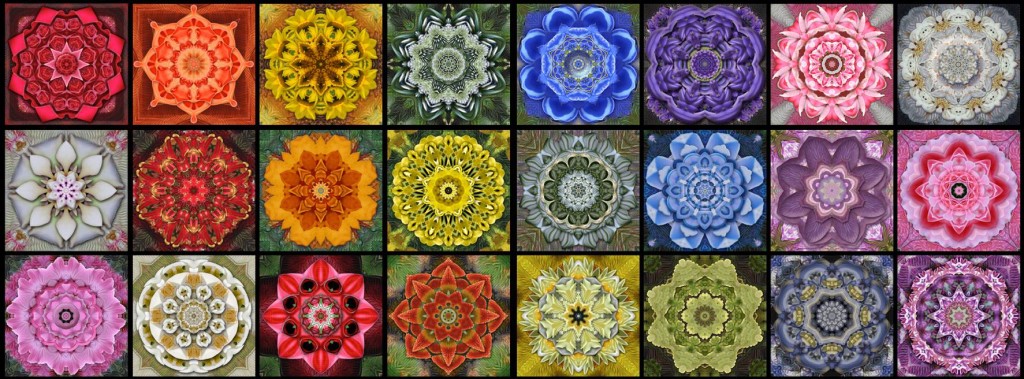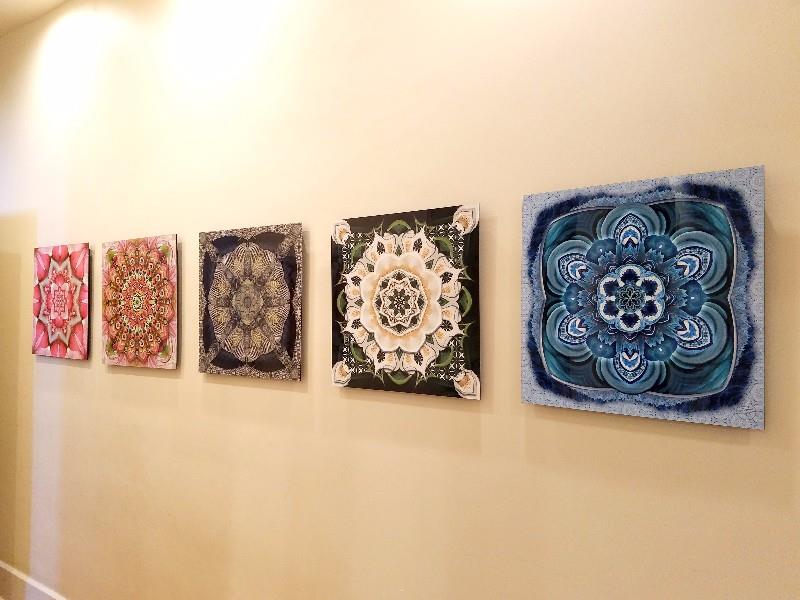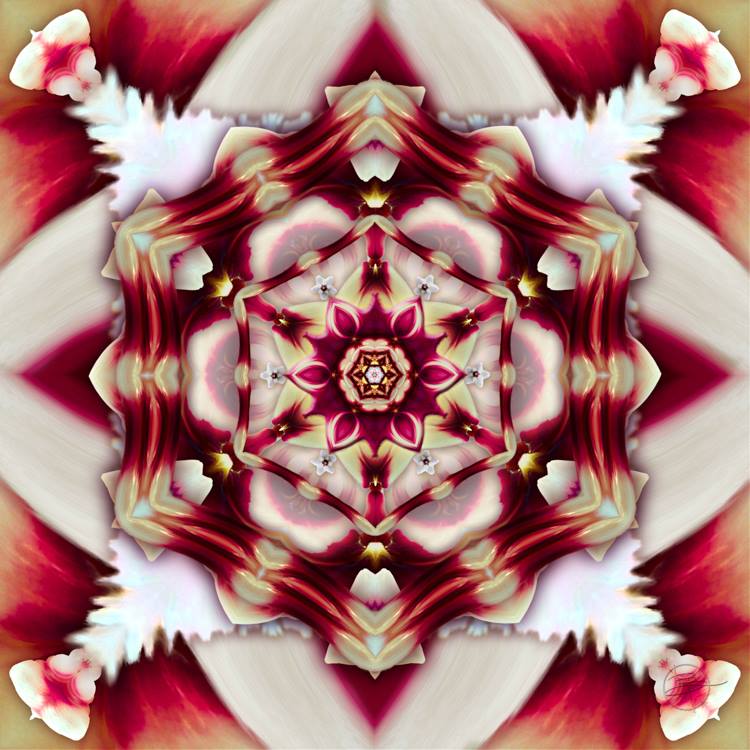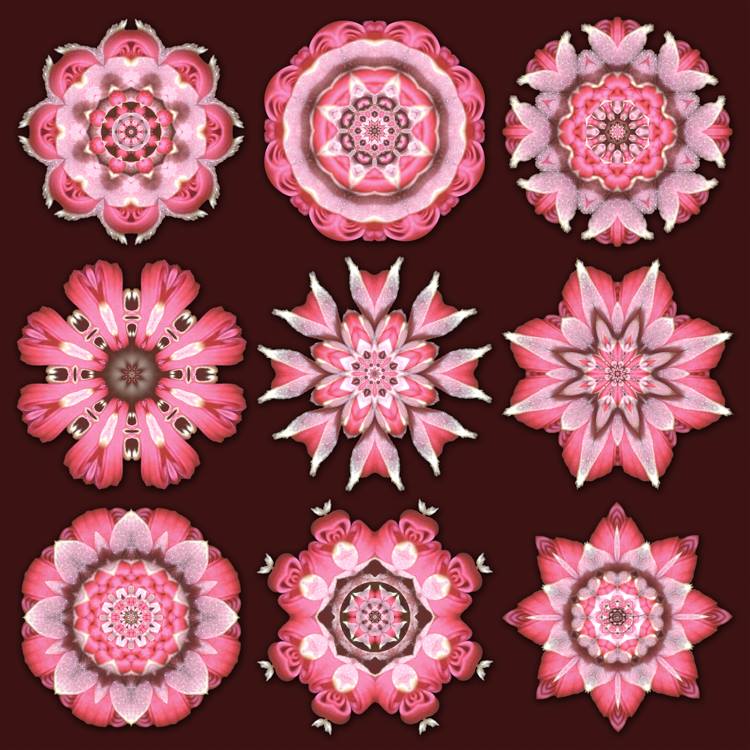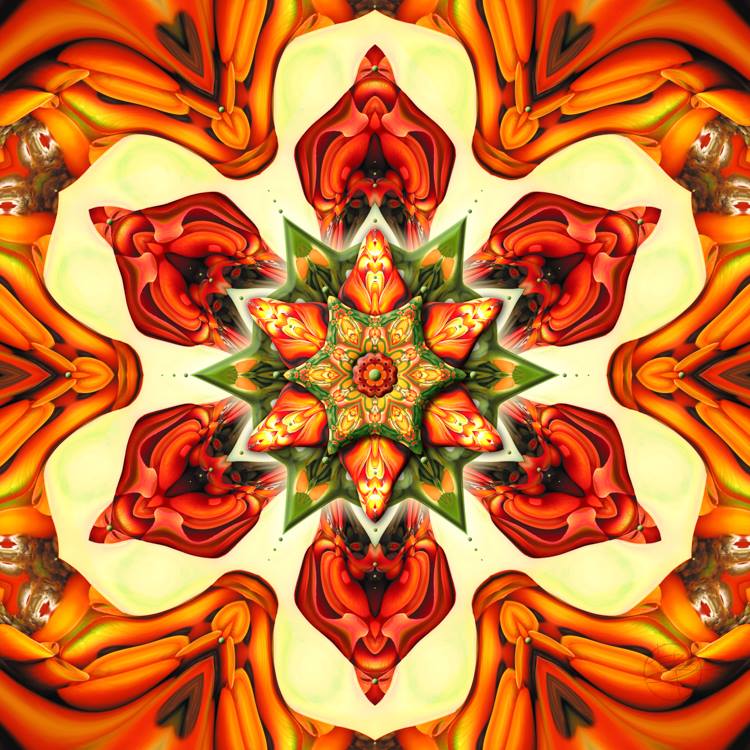Subtly yet fundamentally kaleidoscopic, Karen Hochman Brown’s works are absorbing and beautiful, photographic and complex mandalas spun and mounted on aluminum as digital prints. Using multiple, layered, and detailed images, and by subtly, elegantly manipulating elements of light and shadow, the artist shapes a single image into an enthralling dimensional work.
Evoking a somewhat psychedelic reference to the flowers of Georgia O’Keeffe, or a stunningly beautiful retelling of the inkblot images in the Rorschach Test, Hochman Brown’s compelling works pull the viewer into a lush and unique dimension, populated by images that are both delicate and rich, in a precise process that was inspired by the artist’s first kaleidoscope enjoyed in her mother’s garden.
“Imagine the world through a kaleidoscope. The colors swirl and dance, revealing patterns and shapes in a whole different focus,” Hochman Brown explains.
Having fallen in love with art as a young child – she calls art “as great a sustenance as food;” as a teen, her passion turned to mathematics, and “the logic of geometric proofs, where the marriage of precision and beauty struck a deep chord within me.”
Purchasing her first Mac computer was the next step in Hochman Brown’s development as an artist. She says that “the confluence of art and math created a tool that resonated to my core. As the technology grew, so did my skills.”
Working with precise fractal computer software, Hochman Brown creates images that move through infinite yet intimate dimensions, spinning, altering, and dancing colors, shapes, and layers. This is not random work, rather, the artist has morphed her art together with her delight and absorption in geometry, geometric shapes, and mathematics. She has even developed and taught curriculum in Construction Geometry Via Art.
Each of her dazzling and depth-filled works is in its own way a curriculum, taking the viewer on a ride that begins with a single photograph manipulated on Hochman Brown’s computer, transported into a modular graphics-synthesizer program, where imagery is extracted and altered in layers. Using functions like polar space, fractal space, assorted modulations, reflections, waves, distortions, and symmetry, the artist collects images as one would collect flower petals or as one’s mind holds distinct visual memories within larger events.
Hochman Brown refers to these distinct image bits as “foundlings.” Once these are identified and saved, she highlights what she sees as the most revealing and interesting parts, adjusts the colors, and stacks them as multiple layers. Returning to her modular graphic-synthesizer, she creates additional foundlings, in each case working to shift and manipulate shadows and light to create the wonderful illusion of depth that marks her work, and then adding emphasizing dots to it. “I find a symphonic union of math and art,” she says, noting that in her recent works, she explores hidden worlds inside manipulated reflections.
In her piece “Hoya Luminosity,” above, ruby red richness creates an image that reminds the viewer of a rose or an orchid, a gestating image, as if a floral heart were beating through the fluttering wings of an alien creature. Like so many of Hochman Brown’s works, the image seems to shift as it is being absorbed; it glows from within, like stained glass suspended in the sunshine.
With “Love in the Fringes Medallions,” the artist has created a series of pink images, flowers, snowflakes, stars, each feminine and feather-like.
Her “Gnarled Yellow Pepper” is indeed the vivisection of a pepper, but so much more, the perfect homage to and refinement of nature. This work has a waxy, solid quality that feels tangible, visually fragrant; other images have the look of finely spun glass, as does the transcendent background and foreground in “Dombeya Perception.’
Other works resemble feather collages, thick oil paint, textured fabric, or ice sculptures, as in “Buenos Aires Medallions,” below.
Her newest works, “Artists Speak” present images that reflect physical images of the artists she quotes, pays homage to, and recreates in her work.
Other works have a seasonal bent, as with the magical poinsettia quality and holiday colors of “Grevillea Regalia,” a work described by the artist as celebrating the holiday season.
Just as kaleidoscopes, math, and Macs all play a role in Hochman Brown’s work and her evolution as an artist, so, too does a strong feeling of celebration and joy. Viewers able to fully absorb her sensuous, complex work will feel a startling, almost visceral pleasure in her light-filled, glowing images.
In short, set aside the treasured childhood kaleidoscope of memory, and look instead at the wondrous swirling worlds that Hochman Brown creates.
- Genie Davis; photographs courtesy of the artist



